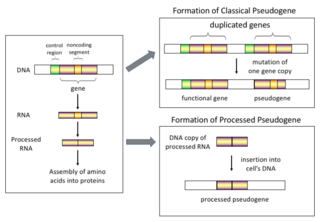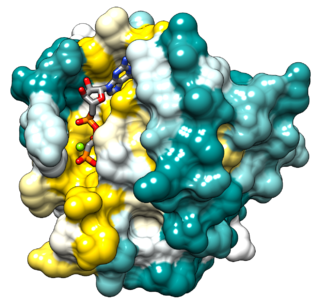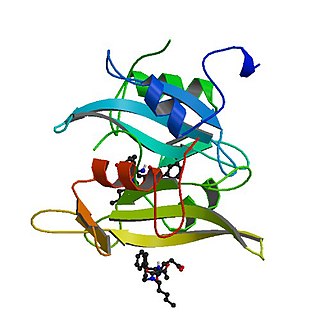
Pseudogenes, sometimes referred to as zombie genes in the media, are segments of DNA that are related to real genes. Pseudogenes have lost at least some functionality, relative to the complete gene, in cellular gene expression or protein-coding ability. Pseudogenes often result from the accumulation of multiple mutations within a gene whose product is not required for the survival of the organism, but can also be caused by genomic copy number variation (CNV) where segments of 1+ kb are duplicated or deleted. Although not fully functional, pseudogenes may be functional, similar to other kinds of noncoding DNA, which can perform regulatory functions. The "pseudo" in "pseudogene" implies a variation in sequence relative to the parent coding gene, but does not necessarily indicate pseudo-function. Despite being non-coding, many pseudogenes have important roles in normal physiology and abnormal pathology.

Ras is a family of related proteins which is expressed in all animal cell lineages and organs. All Ras protein family members belong to a class of protein called small GTPase, and are involved in transmitting signals within cells. Ras is the prototypical member of the Ras superfamily of proteins, which are all related in 3D structure and regulate diverse cell behaviours.

A synovial sarcoma is a rare form of cancer which occurs primarily in the extremities of the arms or legs, often in close proximity to joint capsules and tendon sheaths. It is a type of soft tissue sarcoma.
Ectopic is a word used with a prefix, ecto, meaning “out of place.” Ectopic expression is an abnormal gene expression in a cell type, tissue type, or developmental stage in which the gene is not usually expressed. The term ectopic expression is predominately used in studies using metazoans, especially in Drosophila melanogaster for research purposes.

Mucin 1, cell surface associated (MUC1) or polymorphic epithelial mucin (PEM) is a mucin encoded by the MUC1 gene in humans. MUC1 is a glycoprotein with extensive O-linked glycosylation of its extracellular domain. Mucins line the apical surface of epithelial cells in the lungs, stomach, intestines, eyes and several other organs. Mucins protect the body from infection by pathogen binding to oligosaccharides in the extracellular domain, preventing the pathogen from reaching the cell surface. Overexpression of MUC1 is often associated with colon, breast, ovarian, lung and pancreatic cancers. Joyce Taylor-Papadimitriou identified and characterised the antigen during her work with breast and ovarian tumors.

Proto-oncogene tyrosine-protein kinase Src, also known as proto-oncogene c-Src or simply c-Src , is a non-receptor tyrosine kinase protein that in humans is encoded by the SRC gene. This protein phosphorylates specific tyrosine residues in other proteins.

G protein-coupled receptor 64 also known as HE6 is a protein encoded by the ADGRG2 gene. GPR64 is a member of the adhesion GPCR family. Adhesion GPCRs are characterized by an extended extracellular region often possessing N-terminal protein modules that is linked to a TM7 region via a domain known as the GPCR-Autoproteolysis INducing (GAIN) domain.

Gardner-Rasheed feline sarcoma viral (v-fgr) oncogene homolog, also known as FGR, is a protein which in humans is encoded by the FGR gene.

ERG is an oncogene. ERG is a member of the ETS family of transcription factors. The ERG gene encodes for a protein, also called ERG, that functions as a transcriptional regulator. Genes in the ETS family regulate embryonic development, cell proliferation, differentiation, angiogenesis, inflammation, and apoptosis.

Protein SSX2 is a protein that in humans is encoded by the SSX2 gene.

Protein SSXT is a protein that in humans is encoded by the SS18 gene.

AT-rich interactive domain-containing protein 3B is a protein that in humans is encoded by the ARID3B gene.

Protein SSX1 is a protein that in humans is encoded by the SSX1 gene.

40S ribosomal protein S30 is a protein that in humans is encoded by the FAU gene.

Afadin- and alpha-actinin-binding protein is a protein that in humans is encoded by the SSX2IP gene. It has been shown that it functions together with WDR8 in centrosome maturation, ensuring proper spindle length and orientation. The SSX2IP-WDR8 complex additionally promotes ciliary vesicle docking during ciliogenesis.

Protein SSX4 is a protein that in humans is encoded by the SSX4 gene.

SS18-like protein 1 is a protein that in humans is encoded by the SS18L1 gene.

Protein SSX5 is a protein that in humans is encoded by the SSX5 gene.
Synovial sarcoma, X breakpoint (SSX) refers to a group of genes rearranged in synovial sarcoma.
Biphenotypic sinonasal sarcoma is a newly recognized, very rare, low grade malignant tumor of the nasal cavity which formerly was probably included in fibrosarcoma and synovial sarcoma cases. It is newly recognized by the World Health Organization Classification of Head and Neck Tumours.














